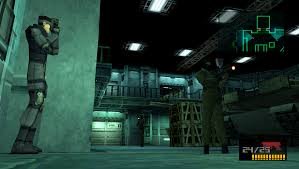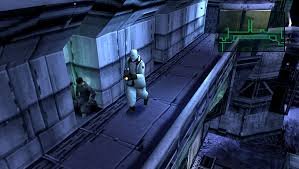Official Review
Gameplay
Stealth Mechanics
At its core, Metal Gear Solid is a stealth game that emphasizes avoiding detection over direct confrontation. The game introduces a variety of tools and techniques for sneaking past enemies:- The radar system, which displays enemy positions and their field of vision
- Noise-making distractions like knocking on walls
- Hiding spots such as cardboard boxes and lockers
Combat and Bosses
While stealth is the primary focus, Metal Gear Solid doesn't shy away from action. When stealth fails, players can engage in combat using a variety of weapons. The boss battles are particularly noteworthy, each featuring unique mechanics and requiring different strategies to overcome.Innovative Fourth Wall Breaks
One of the most memorable aspects of Metal Gear Solid is its willingness to break the fourth wall. From a boss that "reads your memory card" to instructions to look at the back of the CD case for a codec frequency, these moments add a layer of meta-commentary that was revolutionary for its time.Story and Characters
Plot
Set on a remote Alaskan island, the game follows Solid Snake, a special forces operative sent to neutralize a terrorist threat. What begins as a straightforward mission quickly unravels into a complex web of conspiracies, double-crosses, and philosophical musings on genetics, nuclear proliferation, and the nature of warfare.Character Development
Metal Gear Solid features a rich cast of characters, each with their own motivations and backstories. Solid Snake, the gruff protagonist, is balanced by a supporting cast that includes the enigmatic Meryl Silverburgh, the conflicted Dr. Hal Emmerich, and the menacing Liquid Snake. The game takes time to develop these characters, making their fates feel genuinely impactful.Themes
The game tackles heavy themes with surprising depth for a video game of its era. It explores the ethics of genetic engineering, the psychological toll of warfare, and the dangers of nuclear proliferation. These themes are woven throughout the narrative and gameplay, creating a cohesive and thought-provoking experience.Graphics and Sound
Visual Design
For a PlayStation title, Metal Gear Solid pushes the hardware to its limits. The character models are detailed for the time, and the environments are atmospheric and varied. The use of fixed camera angles adds to the cinematic feel, though it can occasionally lead to frustrating moments when enemies are just out of view.Audio
The game's audio design is exemplary. The voice acting, featuring David Hayter as Solid Snake, is top-notch and helps bring the characters to life. The soundtrack, composed by Kazuki Muraoka and Takanari Ishiyama, perfectly captures the tension of stealth sequences and the drama of story moments.Legacy and Impact
Metal Gear Solid's influence on the gaming industry cannot be overstated. It popularized stealth gameplay mechanics that would become staples of the genre. Its cinematic approach to storytelling, with long cutscenes and codec conversations, paved the way for more narrative-focused games.
The game's success spawned a franchise that has continued to push boundaries with each installment. It also cemented Hideo Kojima's reputation as an auteur in the gaming industry, known for his unique blend of gameplay and storytelling.
Conclusion
Metal Gear Solid is more than just a game; it's a landmark achievement in interactive entertainment. Its blend of stealth gameplay, cinematic storytelling, and meta-commentary created an experience that was ahead of its time and continues to influence game design today. While some aspects may feel dated by modern standards, the core experience remains as engaging and thought-provoking as ever. For anyone interested in the history of video games or looking for a masterclass in game design, Metal Gear Solid is an essential play.
Score: 9.5/10
Metal Gear Solid isn't just a great game; it's a pivotal moment in gaming history that helped shape the medium into what it is today.




